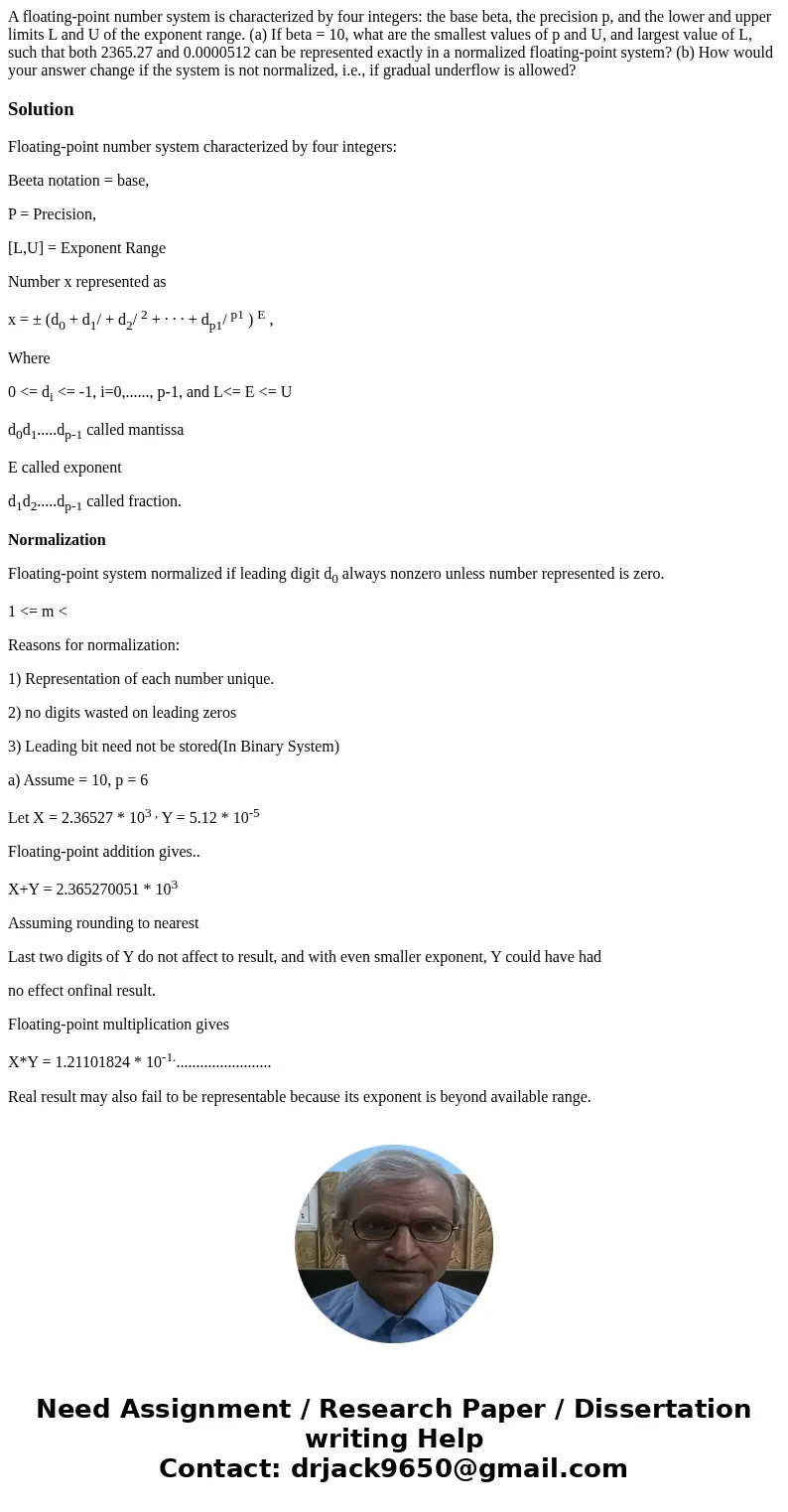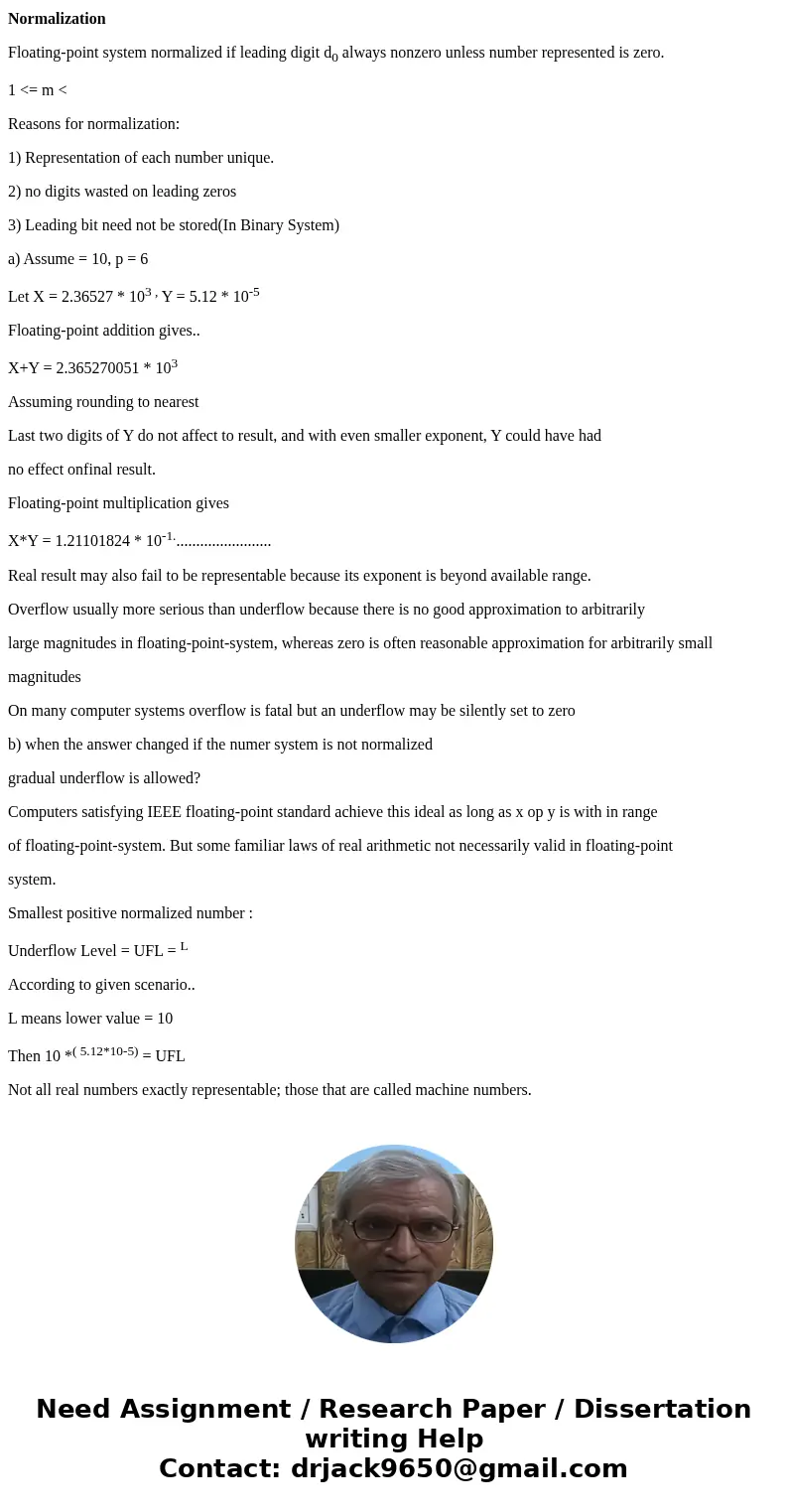A floatingpoint number system is characterized by four integ
Solution
Floating-point number system characterized by four integers:
Beeta notation = base,
P = Precision,
[L,U] = Exponent Range
Number x represented as
x = ± (d0 + d1/ + d2/ 2 + · · · + dp1/ p1 ) E ,
Where
0 <= di <= -1, i=0,......, p-1, and L<= E <= U
d0d1.....dp-1 called mantissa
E called exponent
d1d2.....dp-1 called fraction.
Normalization
Floating-point system normalized if leading digit d0 always nonzero unless number represented is zero.
1 <= m <
Reasons for normalization:
1) Representation of each number unique.
2) no digits wasted on leading zeros
3) Leading bit need not be stored(In Binary System)
a) Assume = 10, p = 6
Let X = 2.36527 * 103 , Y = 5.12 * 10-5
Floating-point addition gives..
X+Y = 2.365270051 * 103
Assuming rounding to nearest
Last two digits of Y do not affect to result, and with even smaller exponent, Y could have had
no effect onfinal result.
Floating-point multiplication gives
X*Y = 1.21101824 * 10-1.........................
Real result may also fail to be representable because its exponent is beyond available range.
Overflow usually more serious than underflow because there is no good approximation to arbitrarily
large magnitudes in floating-point-system, whereas zero is often reasonable approximation for arbitrarily small
magnitudes
On many computer systems overflow is fatal but an underflow may be silently set to zero
b) when the answer changed if the numer system is not normalized
gradual underflow is allowed?
Computers satisfying IEEE floating-point standard achieve this ideal as long as x op y is with in range
of floating-point-system. But some familiar laws of real arithmetic not necessarily valid in floating-point
system.
Smallest positive normalized number :
Underflow Level = UFL = L
According to given scenario..
L means lower value = 10
Then 10 *( 5.12*10-5) = UFL
Not all real numbers exactly representable; those that are called machine numbers.


 Homework Sourse
Homework Sourse